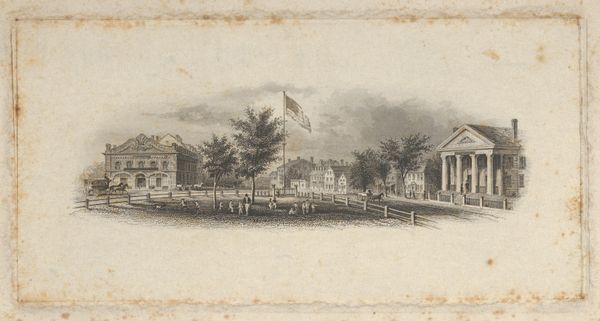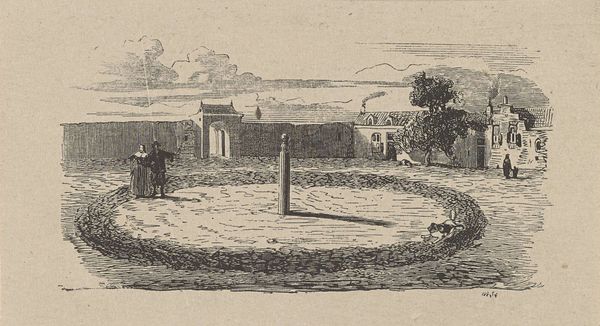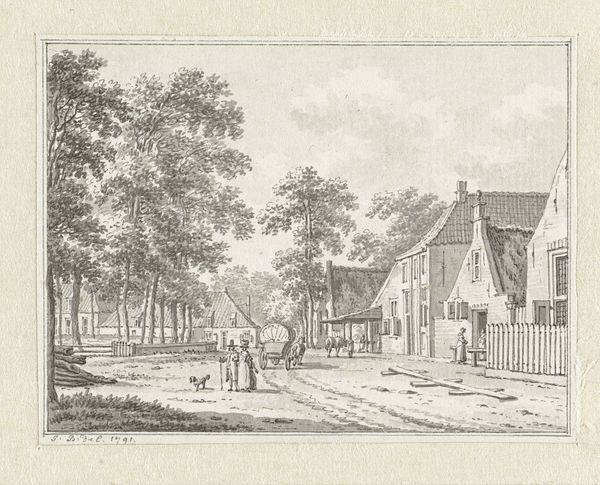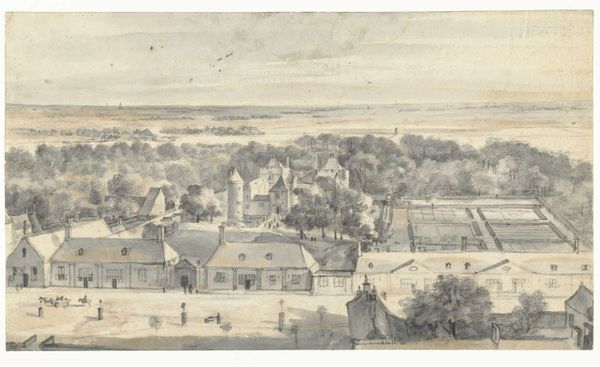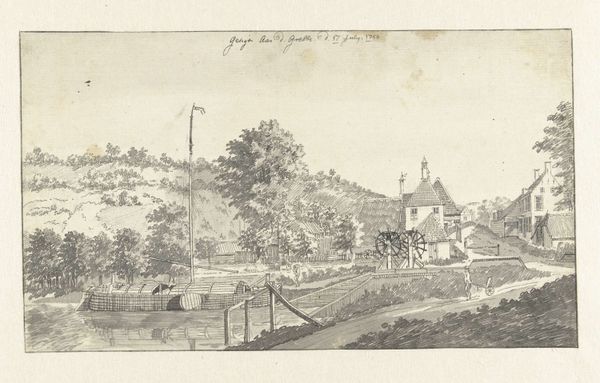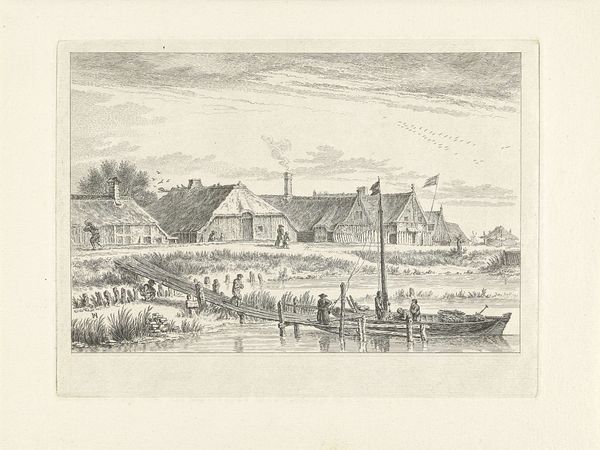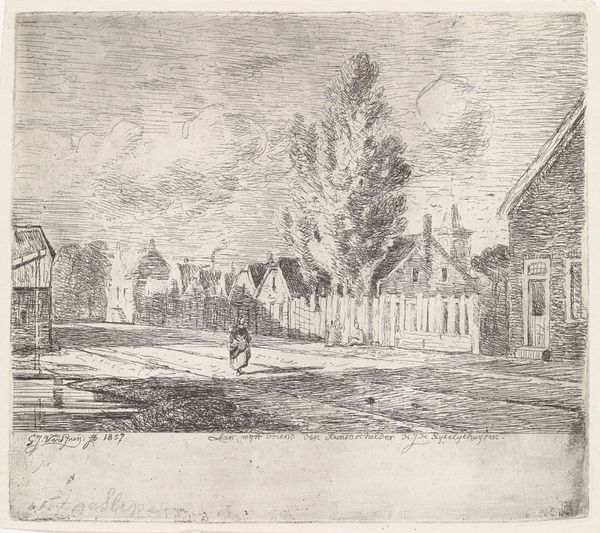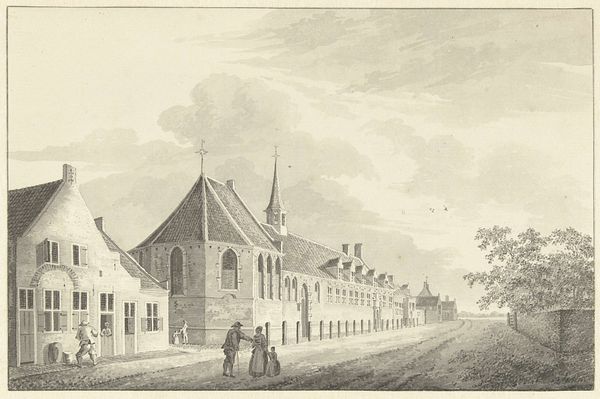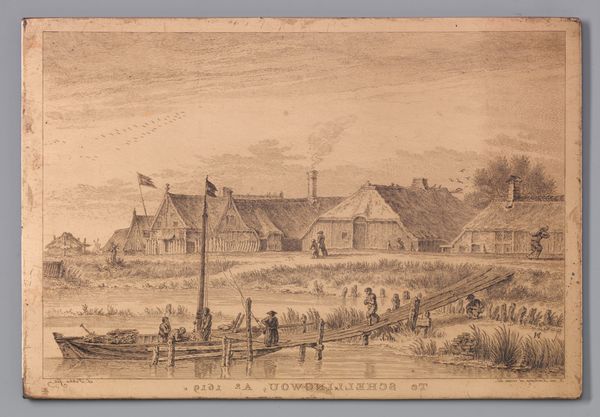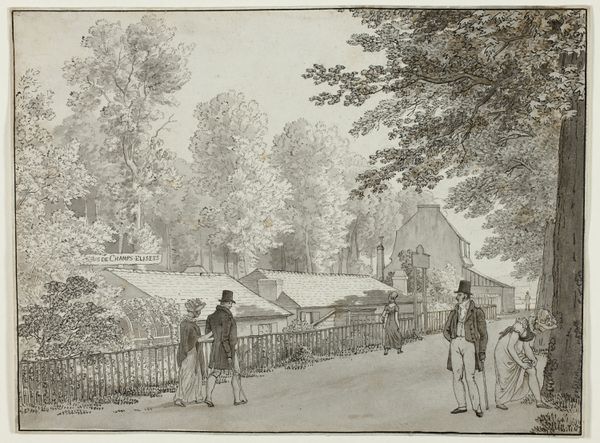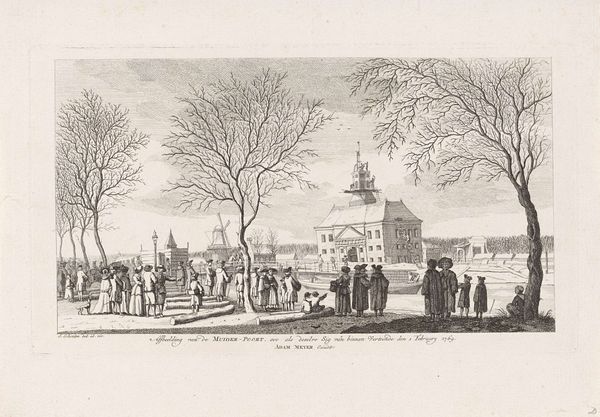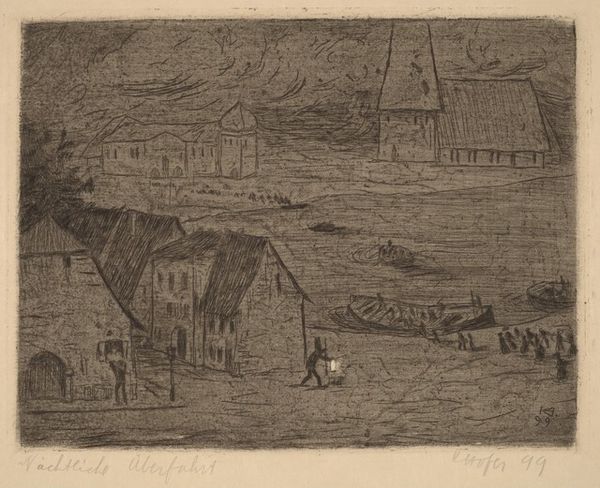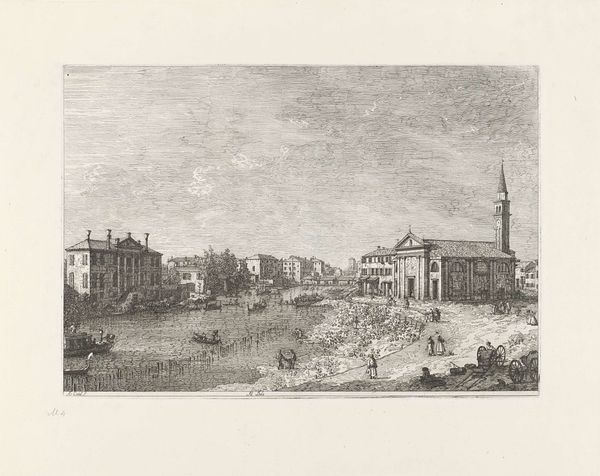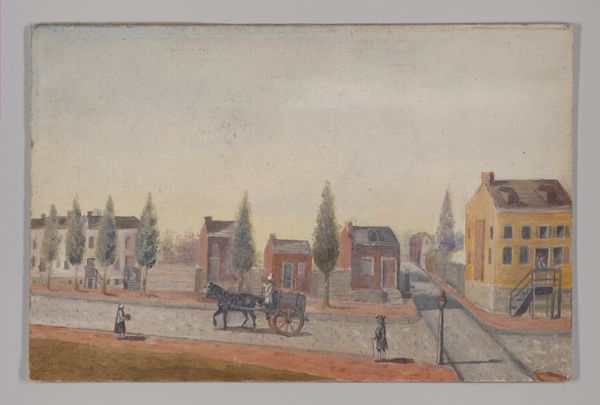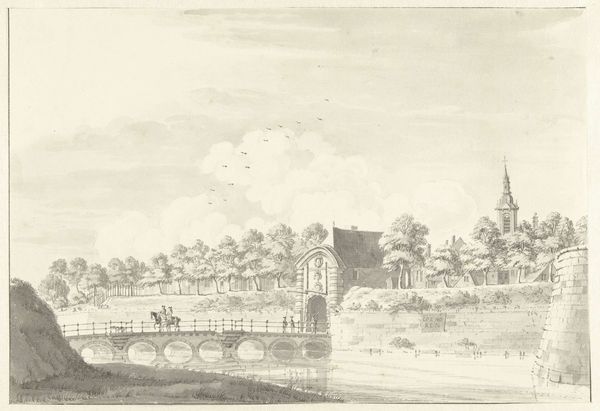
drawing, pencil
#
drawing
#
impressionism
#
landscape
#
pencil
#
realism
Copyright: Public domain
Editor: Here we have Van Gogh’s “Van Stolkpark,” a pencil drawing from 1882. It's a landscape, quite understated, almost muted in its tonality. The rigid fence in the foreground feels a little confining, yet the gardens beyond hint at growth and potential. What do you see in this piece? Curator: The fence indeed dominates the immediate foreground, doesn’t it? But consider: fences mark boundaries, yes, but also claim territory, define a space of potential. What’s within that space? Van Gogh populates it with promise. Notice how the gardens, though sketched simply, hold a figure tending to the young trees. He is a symbol of care and cultivation. Editor: That makes sense. I hadn’t thought about the act of cultivation itself as symbolic. But is it reaching too much to interpret this quiet scene as representing hope or forward momentum? Curator: Not at all! The carefully tended gardens suggest just that. Even the rather severe buildings in the background, rendered without sentimentality, don’t negate that promise. Van Gogh’s choice of a public park could be laden with symbolism, and may carry social commentary as well as suggest human connection and a collective aspiration for growth, perhaps? Editor: So it's not just a landscape, but a symbolic landscape – the park itself embodying collective progress, nurtured by the careful figure in the garden? Curator: Precisely! And isn’t that figure imbued with purpose as well? Consider how we read figures in landscapes: Often, they represent humankind's relationship with the natural world, and the human imprint on it. The single gardener may signify humankind itself at work! Editor: That completely reframes how I see the drawing. I initially viewed it as quite simple and unremarkable, but I can see the weight of his choices behind it. Thank you for the insight. Curator: It has been my pleasure, consider the fence as part of a long historical thread representing our hopes.
Comments
No comments
Be the first to comment and join the conversation on the ultimate creative platform.
